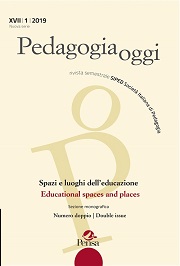Those little rooms all to themselves. Domestic spaces and their visual representation in children’s literature
Abstract
The home plays an extremely important part in children’s literature. It can record and project the moods and the psychological, affective, social and cultural facets of its occupants. The history of children’s literature has seen profound changes in the way the home is represented, particularly since the end of the 1950s, when the illustrated pages of children’s books began to describe a new interior geography. This contribution aims to outline the features of the architectural evolution of children’s bedrooms. We show how their iconographic representation developed, focusing on the graphical and compositional elements of children’s lairs in picturebooks from the latter half of the 20th century to the present. The aim is to identify and interpret the meanings, persistent and
changing features, and the hitherto unsuspected links that illustrations in children’s literature were capable of establishing with the culture of the time.




